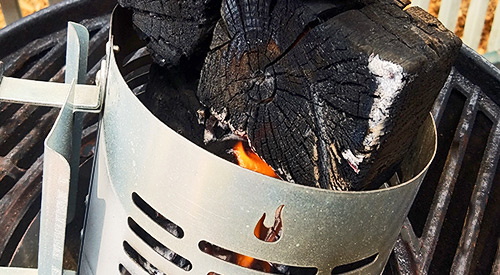 |
| We are doing our grilled tofu adding a BBQ flare recipe on a grill pan to hold the Tofu so we can add a natural smoky flavor! |
When you’re ready for a non-animal protein, why not take tofu to the grill and infuse it with hickory wood smoke which is a perfect match to our spicy Hoisin sauce and marinade. Our 6-ingredient recipe will get you on the way to a perfect healthier alternative to traditional smoked and grilled proteins.
Pressing Is Key
Made from soybean curds, tofu is a great alternative to meat for a source of protein as well as being low in calories with no cholesterol. It is important to press the tofu to release the trapped water which is commonly packed in. To do this, simple sandwich the tofu between multiple layers of paper towel-lined plates and weight it from the top. Once pressed for at least an hour or longer, you can whisk together a spicy marinade that will also become our sauce for the grilling/smoking step.Gather together ½ cup of Hoisin sauce, 1 tablespoon soy sauce, 3 tablespoons rice wine vinegar, 1 tablespoon lime juice, and ½ teaspoon garlic powder. Whisk all these ingredients together to be used to marinate the tofu for great flavor.
Once the marinade is made, place the tofu in a resealable storage bag and add the marinade. Allow the tofu to marinate in the refrigerator for at least one hour or more; the longer it marinates, the fuller the flavor will be.
Gas or Charcoal Grill Makes It Perfect
 Once ready to grill, preheat all burners of the grill to medium-high and collect 1-2 single or double filet wood chunks from SmokinLicious® to
be placed on the heat shield. This will add the great smoke flavor.
Feel free to cook on a charcoal grill as well. Once preheated, leave
only the heat of a single burner on medium-high which will also have the
wood chunks placed on that burner’s heat shield. All other burners
should be turned off. If using a charcoal grill, keep the wood and
charcoal to one side of the grill grate area. I am using a grill pan
for my tofu which I’ve pre-sliced into 1-inch thick pieces but you
certainly can place directly on the grill grate.
Once ready to grill, preheat all burners of the grill to medium-high and collect 1-2 single or double filet wood chunks from SmokinLicious® to
be placed on the heat shield. This will add the great smoke flavor.
Feel free to cook on a charcoal grill as well. Once preheated, leave
only the heat of a single burner on medium-high which will also have the
wood chunks placed on that burner’s heat shield. All other burners
should be turned off. If using a charcoal grill, keep the wood and
charcoal to one side of the grill grate area. I am using a grill pan
for my tofu which I’ve pre-sliced into 1-inch thick pieces but you
certainly can place directly on the grill grate.With our tofu placed in a grill pan for cooking on a gas grill using an indirect method of cooking with wood chunks, this will take roughly 10 minutes per side to cook. During the cooking time, it is important to continue to brush the slices with the reserved marinade to keep the flavors intact. Flipping the slices at least once is recommended. Once cooked, I like to put a final layer of the sauce on the tofu slices and allow to rest.
Hearty & Filling
 Providing all the essential amino acids for a healthy diet, tofu is a
perfect protein to smoke. One caution is that this product tends to
require a bolder wood flavor to reveal itself through the spicy sauce. I
recommend considering such woods as hickory, oak, beech. Once cooked,
you can cut these up into small pieces to serve as a hors d’oeuvre, or
add to a salad, soup, rice dish, or vegetable side dish. Don’t forget,
this is hearty enough to be a meal so feel free to serve it as the main
protein with a side of salad, coleslaw, or a vegetable side. Spicy
Smoked Tofu may turn out to be your healthy protein alternative with
that hearty barbecue flare! We hope you will follow our recipe Grilled
Tofu adding a BBQ Flare for your next dinner event!
Providing all the essential amino acids for a healthy diet, tofu is a
perfect protein to smoke. One caution is that this product tends to
require a bolder wood flavor to reveal itself through the spicy sauce. I
recommend considering such woods as hickory, oak, beech. Once cooked,
you can cut these up into small pieces to serve as a hors d’oeuvre, or
add to a salad, soup, rice dish, or vegetable side dish. Don’t forget,
this is hearty enough to be a meal so feel free to serve it as the main
protein with a side of salad, coleslaw, or a vegetable side. Spicy
Smoked Tofu may turn out to be your healthy protein alternative with
that hearty barbecue flare! We hope you will follow our recipe Grilled
Tofu adding a BBQ Flare for your next dinner event!




